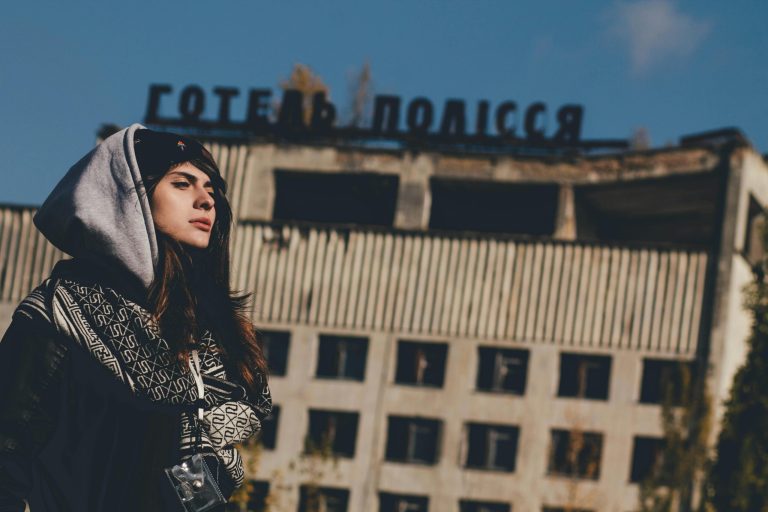Russia’s economy is showing cracks as the country struggles to sustain its military operations in Ukraine.
Officially, Russia’s GDP grew by 3.6% in 2023, with similar growth expected this year.
However, this economic performance hides deeper problems caused by skyrocketing military spending, weapon production bottlenecks, and a labor market stretched to its limits.
As the war nears its third year, Russia’s financial and industrial systems are under immense pressure.
The defense budget alone will account for 6% of GDP in 2024, the highest since the Cold War.
Combined with security services spending, this amounts to 40% of the government budget.
At the same time, the central bank has raised interest rates to 21%, making it harder for businesses and consumers to borrow, with rates expected to rise further.
A tight labor market creates risks
Russia’s unemployment rate is at a record low of 2.4%, an unusual figure for a country at war.
Yet, this tight labor market signals significant challenges.
The Kremlin has redirected workers into the defense sector, with over 500,000 new employees in arms production and paramilitary roles since 2022.
Additionally, the military requires 30,000 recruits each month to replace battlefield losses, forcing it to turn to unconventional sources like prisoners and North Korean soldiers.
These shifts leave civilian industries short-staffed.
Employers in non-defense sectors struggle to compete with the fivefold wage increases offered in defense-related jobs.
Rising labor costs have further fueled inflation, which now exceeds 8%.
Price hikes for essential goods like potatoes (+73%) and butter (+30%) are worsening living conditions for average Russians.
Weapon production cannot keep up
Russia is losing military equipment at unsustainable rates.
Analysts report monthly losses of 320 artillery barrels and 155 infantry vehicles.
Domestic production falls far short of meeting these needs, with only 20 artillery barrels and 17 infantry vehicles manufactured each month.
The country has turned to old Soviet-era stockpiles and imports, including artillery shells from North Korea, but these sources are depleting quickly.
Weapon production faces technical barriers as well.
Russia’s capacity to produce tank barrels and large-caliber cannons is limited by its reliance on specialized rotary forges, of which it has only two.
Each forge produces just 10 barrels per month, highlighting severe industrial constraints.
Without external assistance—such as from China, which has yet to commit its resources—Russia’s weapons shortages will likely worsen by late 2025.
Why are interest rates rising during wartime?
While most central banks aim to lower interest rates during conflicts to encourage spending, Russia’s central bank is taking the opposite approach.
Interest rates now stand at 21%, compared to just 6% before the war.
This policy reflects a desperate effort to stabilize the ruble, which has fallen 10% against the yuan this year.
Maintaining the ruble’s value is critical because Russia relies on imports, especially from China, for key technologies like microelectronics used in drones, missiles, and tanks.
High borrowing costs are already taking a toll.
Mortgage volumes halved in July when subsidies ended, and corporate bankruptcies are up 20% this year.
Even state-aligned entities like the Russian Union of Industrialists and Entrepreneurs report that investment plans for 2025 are being postponed due to unaffordable financing.
Dependence on China grows
China has become Russia’s largest trading partner, supplying over 90% of its microelectronics and a third of all imports. However, this dependence creates vulnerabilities for Russia.
Unlike the US-UK alliance during World War II, where the US provided critical supplies through the Lend-Lease program, China’s support comes with demands.
Russia must pay for imports in yuan, making the ruble’s stability a key factor in sustaining military operations.
This reliance on China also limits Russia’s geopolitical flexibility.
While the recent BRICS summits have been used to project an image of strength, they underline how much Russia’s economy and military now depend on Beijing.
China accounts for over 60% of BRICS economic output, giving it significant influence over the bloc.
Lowering the nuclear threshold
Russia’s recent update to its nuclear doctrine raises new concerns.
The revised policy allows for nuclear strikes in response to conventional attacks that threaten the sovereignty or territorial integrity of Russia or Belarus.
This lowers the threshold for nuclear use, potentially escalating tensions with NATO.
The doctrine also includes a broader definition of mass attacks, such as those involving drones or cruise missiles.
The timing of this update coincides with Ukraine’s use of US-supplied ATACMS missiles to strike deep inside Russia.
Moscow considers such attacks to be part of a coordinated NATO effort and has warned that any further escalation could provoke direct retaliation.
Economic growth masks deeper problems
Although Russia’s GDP figures suggest resilience, the underlying picture is far less rosy.
Military-driven growth, or “military Keynesianism,” is unsustainable in the long term.
Most new jobs are linked to defense and add little value to the civilian economy.
Inflation, high interest rates, and a shrinking private sector are eroding the foundations of Russia’s economic stability.
The International Monetary Fund (IMF) projects that Russia’s growth will slow sharply to 1.3% in 2025.
Even state-backed entities like VEB, Russia’s development bank, have cut growth forecasts to 2%.
With fewer resources for investment and a labor market strained by conscription, the outlook is bleak.
Is Putin running out of time?
Putin has a mountain to climb as he tries to sustain the war effort without crippling Russia’s economy.
Dependence on China, weapon and labour shortages, as well as high borrowing costs are straining the country’s ability to maintain both military and domestic stability.
The economic pressures are growing, and the cracks in Russia’s war economy are becoming harder to ignore.
The post Is Russia’s war economy sustainable or is it heading for disaster? appeared first on Invezz

